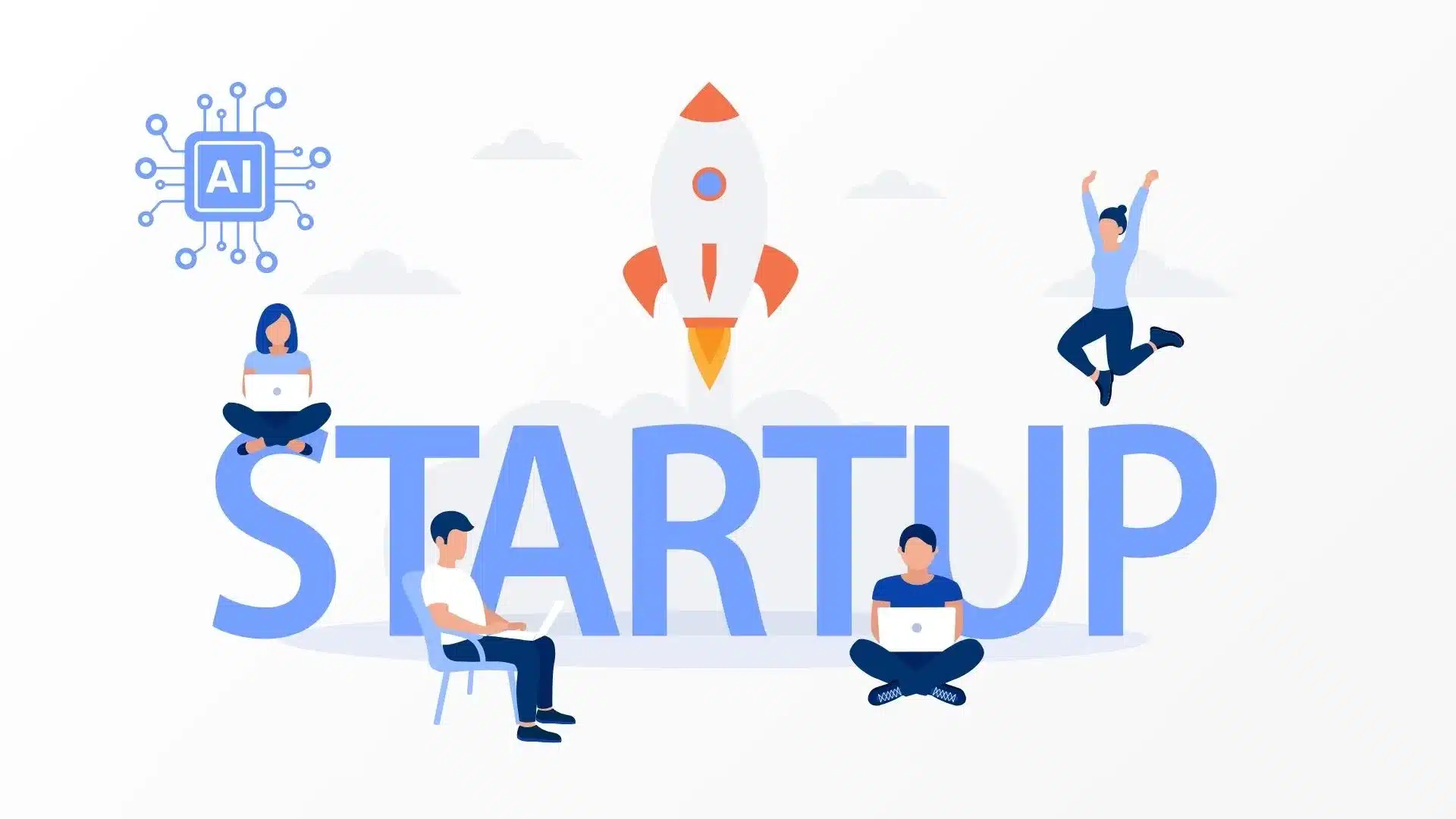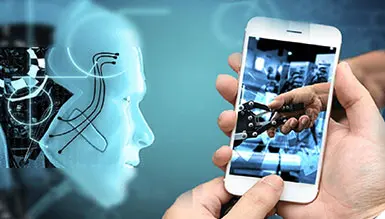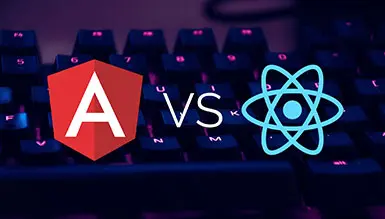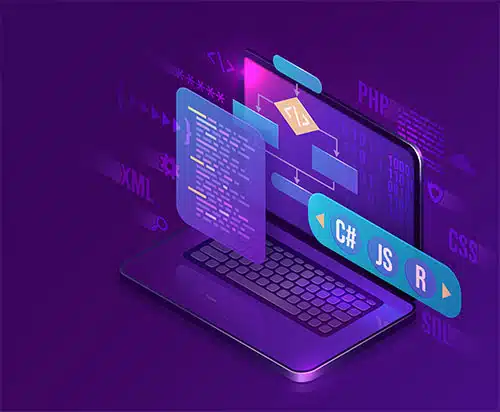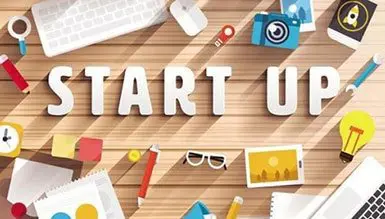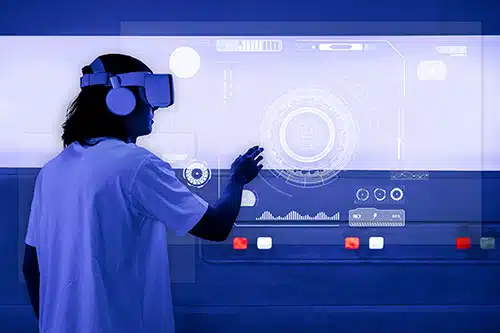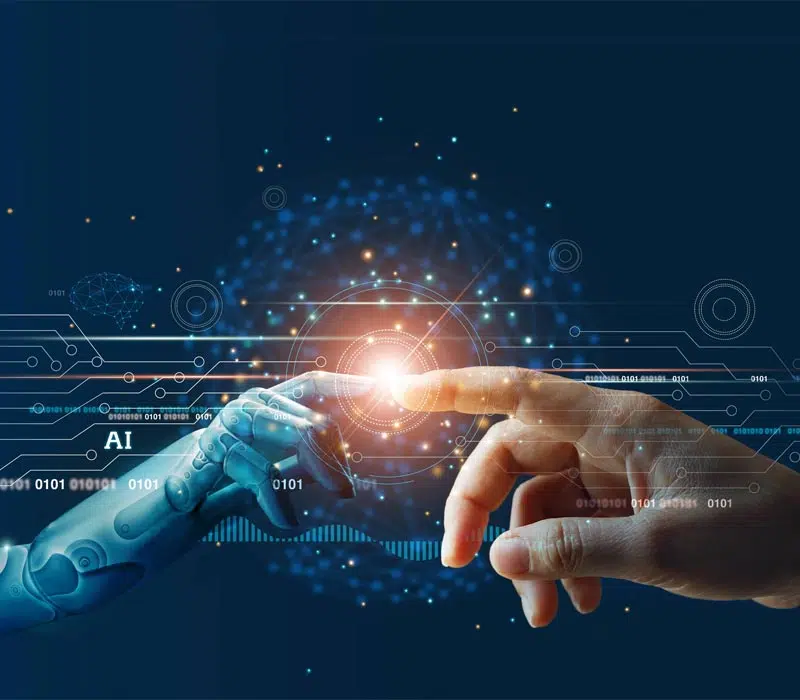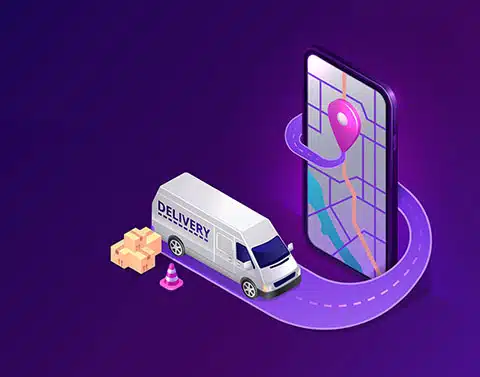In this blog, we are going to discuss the latest technology in mobile app development and mobile app development trends in 2023. It’s no secret that mobile apps are among the fastest-growing sectors of the world’s technology infrastructure with 2.1 million Android apps and 2.1 million iOS apps now available in leading app stores. With a diverse array of use cases encompassing everything from direct-to-consumer service delivery to business-to-business communication. New technology in mobile application development clearly represents one of the world’s greatest opportunities for revenue growth in the future.
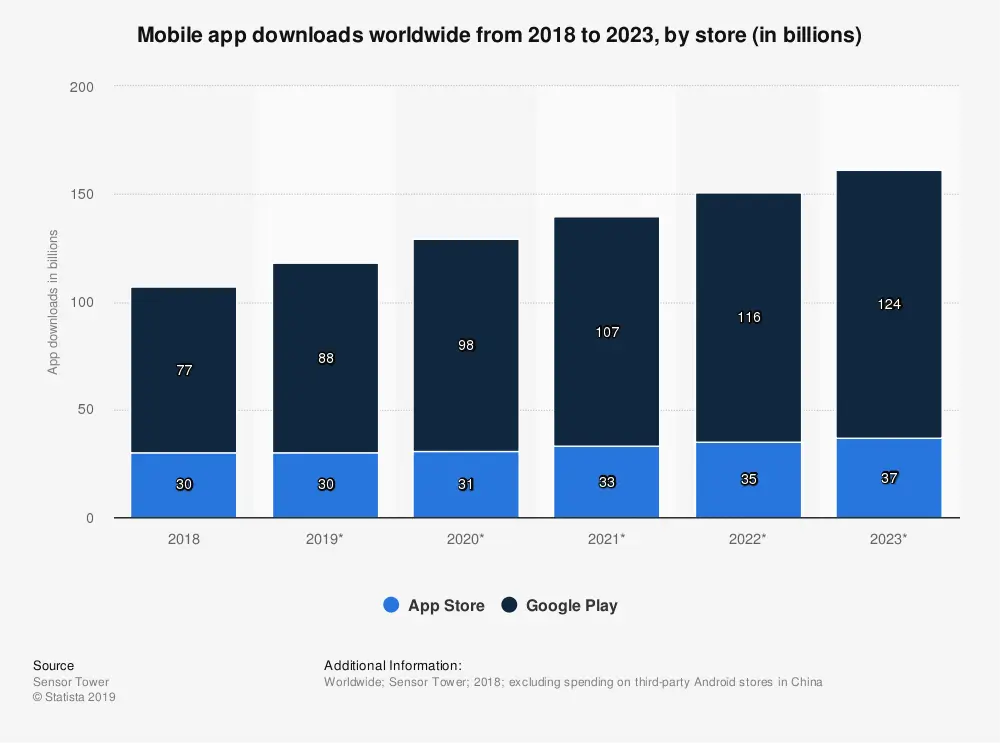
In fact, the revenue from mobile applications is projected to exceed more than 365 billion U.S. dollars. by 2023.
The global mobile app market has been steadily growing and now exceeds $30 billion. This is the perfect time to take advantage of cutting-edge technologies like machine learning, cloud computing or NLP with your products for customers in previously inaccessible markets!
The mobile app development trends for 2023 are the integration of blockchain technology in 2022-23. Blockchain technology offers secure and decentralized transactions and has the potential to revolutionize mobile app development. It can be used for data security, enabling users to control their data without the risk of security breaches. From secure payments to data sharing, we expect to see a rising trend in the integration of blockchain technology in mobile apps.
As smartphones replace laptops, it’s no wonder hiring mobile app developers is in high demand. In future apps, numerous mobile application development trends will be present with different technologies. Like any opportunity, however, taking advantage of the opportunity for app development requires staying abreast of current trends.
| Technology | Expected growth in % by CAGR |
|---|---|
| Cloud Computing | 23% |
| Artificial Intelligence | 37.3% |
| Blockchain | 70% |
| Beacons | 25.8% |
| Wearable Devices | 14.6% |
Top 10 Mobile App Development Trends That Will Dominate in 2022-23
1. Integration with Cloud-Based Computing Services
With mobile devices having limited memory and storage, it is important to have a centralized source of data over the cloud. This has led to an explosion in cloud service offerings from large names like Amazon Web Services (AWS), Microsoft Azure, Google, IBM, and Oracle to many small players. Almost all mobile apps of the future need cloud backend to store and access the data and computing power from the cloud.
The trend has solidified further with announcements from all major cloud players to offer quantum computing capabilities that will help modern apps of the future to have enormously high computing power available at a fraction of the cost.
Cloud computing is one of the most impactful and rapidly evolving areas of technology in the world. In recent years, there have been several notable trends in cloud computing services that businesses and individuals alike should be aware of. One of the key trends in the rise of multi-cloud solutions, which allow companies to use a combination of public and private clouds to meet their unique needs.
2. Machine-Learning
The dramatically increased computing power made possible through cloud-based infrastructure services has quickly ushered in a new era of improved machine learning models. As more and more smartphone users come online every day. These models can continuously learn from ever-expanding data streams.
Thereby improving their capabilities by the minute. While the ability to deploy state-of-the-art machine learning models in mobile applications was once reserved for only large companies. These models are becoming a standard integration for mobile applications, no matter the size of the user base.
The TensorFlow project from Google, for example, provides low-cost and scalable access to a continuously updated library of machine learning models built on the back of billions of dollars in R&D by the Google AI team. With the increased ability to access these machine-learning models. The potential use cases for your mobile app are nearly endless, and the revolution is just beginning.
And if talk about the power of machine learning in mobile app trends are the following ways:
- No need for human interaction and human interference.
- It can easily handle a large amount of multi-dimensional data with the help of machine learning.
- There will be continuous improvement in the process like operation, analysis, and improvement.
- Better predictive and recommendations modeling using data analysis.
3. Chat-Bots and Artificial Intelligence
According to Oracle CEO Mark Hurd – Over 80% of customer-company interactions will involve no human customer service representatives by 2025. Automated chat-bots, such as those built on the natural-language-understanding engine of IBM’s Watson Assistant and similar tools will not only be able to instantly process customer requests but to provide a superior, much more personalized version of customer service while decreasing the burdensome overhead associated with staff and manual labor.
The seven days per week, 365 days per year to service even the most demanding customers. With all of these benefits, it’s no wonder that the global market for automated chatbots and A.I. Based on customer service representatives is projected to grow at a staggering CAGR of more than 25% per year from now until 2024.
Uses of chat-bots with artificial intelligence-
- It enhances customer service and customer engagement by providing customer assistance.
- It is very cost-effective for consumers.
- It impacts business by improving sales and customer services.
4. 5G Mobile technologies
5G mobile communication will be a great boon for mobile apps with faster and more reliable connections, access to information, speed of the internet, and the ability to stay more connected. 5G is going to help applications such as smart homes and smart cities, remote medical industry, and work with 3D arrays in the coming years.
The 5th generation mobile technology is the newest upgrade of cellular communication networks, leaving the current 4G technology behind in terms of its speed, capacity, and latency. The latest trends in 5G mobile technologies include the expanded use of millimeter-wave (mmWave) technology for enhanced data transfer rates, the deployment of small cells to ensure ubiquitous coverage, and network slicing for better network efficiency and security.
One of the significant trends in 5g mobile technologies is the integration and utilization of mm-Wave technology. With continuing research and development, innovative solutions are expected to emerge, elevating 5G technology’s impact on the world.
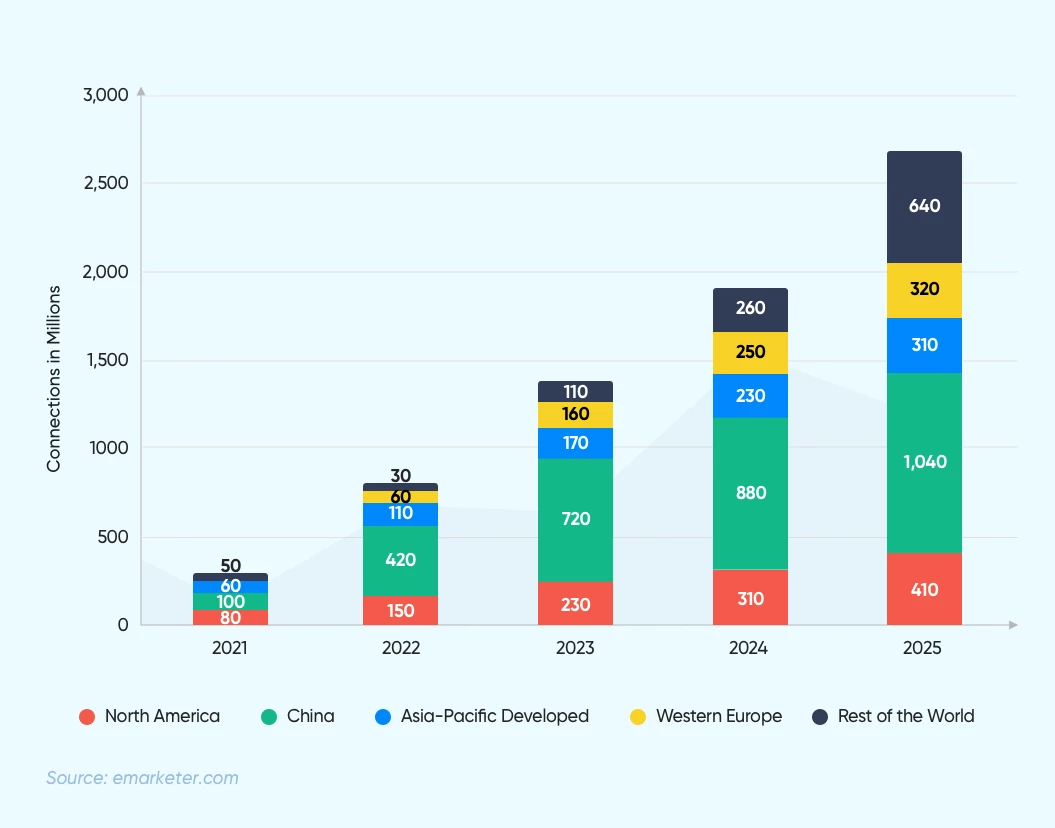
Pros of 5G technology are
- High internet speed and high performance for 5g networks
- Good and reliable connections for users with mobile apps
- More reliable B2B apps for business users
- More data processing and transfer across connected devices
5 G is still new in the market and slowly building on as a trend in mobile app development services. As time moves as more smart devices get connected through 5G, this technology is surely going to shape the new mobile app development techniques of the coming future.
5. Blockchain
Blockchain technology is another building block of the next wave of mobile apps that we would start seeing soon. As we know, Blockchain is a way to store transactional data that can be accessible to only required parties and cannot be modified. It is the very foundation of cryptocurrencies and is claimed to become the next wave of transparently storing data.
As we know, Blockchain in the future will be used in any transactions where more than two parties need to share and control the data and execute contracts. Soon in the near future, we will start seeing blockchain becoming the backbone of data accessed by mobile apps.
6. Enterprise mobility
Enterprise mobility emphasizes creating mobile applications specific for an enterprise catering to internal and external users. Apple some years back announced its ability to allow enterprises to host their private apps outside the public app store.
This changed and welcomed the idea of enterprise apps which was limited to blackberry before that. Since then, many enterprises have allowed and adopted to bring your own device policies and asked their employees to install business process apps through internal app deployment servers.
Here are some features enterprise mobile apps can offer for organizations:-
- Enterprise mobile applications offer you better collaboration and easy access to any kind of data, documents available across all the departments in an organization.
- Enterprise mobile apps allow employees to be able to use any kind of phones and still have access to same apps and data securely.
- They allow enterprises to safely control the access of the data and apps for specific employees as needed.
- With better business processes being managed on the move, it allows the employees of the future to work from anywhere.
7. Beacons
Beacon technology is one of the most promising things happening in location tagging and proximity marketing. Beacons are very small and wireless transmitters that use low-energy Bluetooth devices to transmit the signal. It transmits the signal to smart devices doing location-tagging. Beacons technology makes communication easier between devices and more precise.
The GPS chips on phones cannot find proximity details of the user which carries a large problem for applications that need proximity access within buildings. Beacons are used to triangulate signals around to identify the local presence of the devices connected.
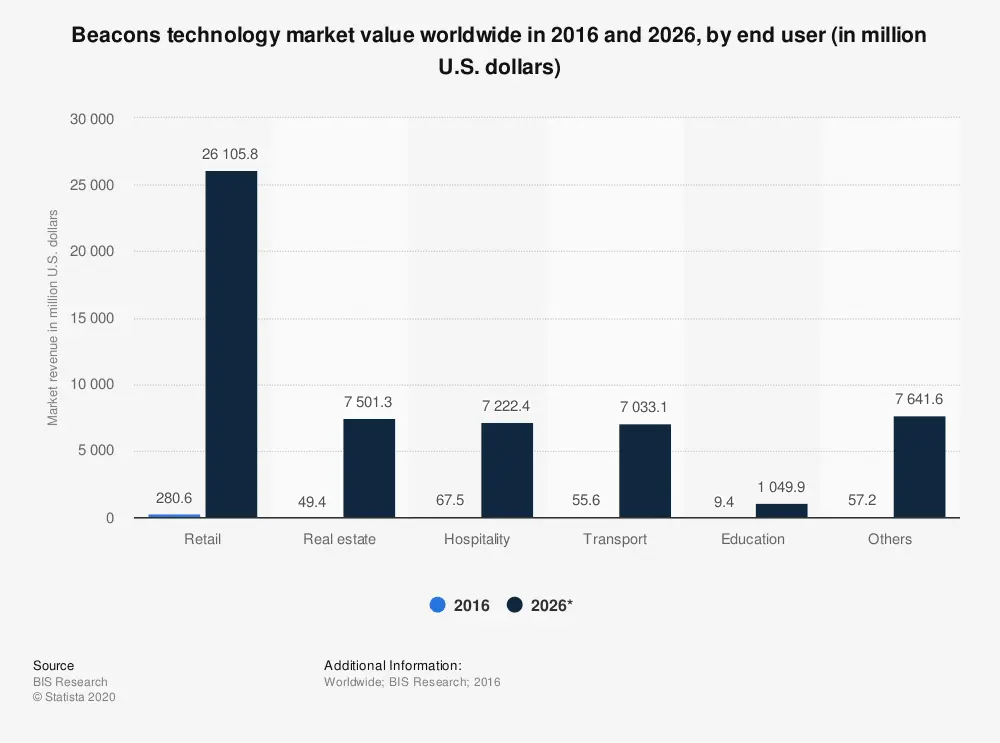
Here you can see the global market value of beacons technology in 2016 and 2026, by the end-user application.
This is a boon to mobile app development of the future as one of the mobile app’s future trends. Developers can now easily track the location of the apps/devices using beacons and communicate by sending app-specific messages and notifications to the apps within range of these beacons.
The latest trends in beacon technology include advanced features, such as location-based services, heat mapping, and analytics. Beacons offer retailers and marketers an opportunity to target their customers with more personalized and relevant content. They can also provide valuable insights into customer behavior, helping businesses make more informed decisions about their operations. Additionally, there has been an increase in the adoption of beacons in various industries, including retail, hospitality, and healthcare.
8. On-demand service apps (uber style)
The on-demand service business model has taken the industry by storm. With services like Uber, Lyft, uber eats, Air-Bnb it is now proven that one does not need to own hard assets to become a unicorn company in the future. There are plenty of services and industries that are slowly going to be changed with these on-demand app platforms.
These apps help have two or three-party interactions on the platform to complete the transaction. It provides a way for every individual small or big vendor to have their products or services being sold directly to the consumer without spending much on marketing.
Soon such on-demand apps will be adopted with individual flavors by local businesses to support the customer demand and reduce the margins loss with larger players.
9. Wearable devices
Wearable devices are trending everywhere in the world. We already have been using smartwatches, fitness bands, digital trackers, and other smart wearable devices. All these devices have changed the mode of interaction with smart devices.
Every wearable device needs a different set of platforms to run services. For example- apple smartwatches require the iOS system and Android smartwatches require the Android system to run and execute their services. Developers today have the option to integrate their apps with wearable devices.
In recent years, wearable devices have become an integral part of daily lives. These devices can be worn and provide a range of functions such as fitness tracking, communication, and entertainment. With the growing popularity of these devices, manufacturers are constantly coming up with new designs and technologies to meet the demands of customers. Another trend in wearable devices is the use of augmented and virtual reality technologies. These devices allow users to experience immersive virtual environments and interact with digital objects in real-time.
This technology is being used in areas such as gaming, entertainment, and education. AR and VR are also being used in healthcare, with doctors and surgeons using these devices to perform operations and diagnose patients.
10. Improving Mobile App Security
The cybersecurity landscape is changing, and small businesses need to be aware. Cyberattacks now account for half of all cyber breaches globally–and that number will only grow by 2022 as global attacks total $3 trillion in 2019 alone!
Cybersecurity thus has become a very important trend that must be kept in mind in developing new mobile apps from scratch. It is no longer limited to apps that involve financial transactions. Today’s apps need to keep cybersecurity in mind from days when the business model or technical architecture is planned.
In mobile apps of the future, be it for consumers or enterprise settings, Mobile app developers must keep cybersecurity at the center of their approach in developing strong data-accessing architecture so that companies should not land in large lawsuits and losses incurred later.
11. Low-Code Development
It refers to a method of software development that allows programmers to create applications and minimal coding efforts. In low-code development, developers use a visual interface to drag and drop pre-built components and connect them with a logic-based flow chart to create complex, feature-rich applications. This approach drastically reduces development time, costs, and complexity, enabling businesses to quickly create custom applications that meet their unique needs. With low-code development, businesses can also reduce their reliance on IT teams and streamline their entire development process, allowing them to innovate faster and stay ahead of the competition. However, it is essential to choose the right low-code platform, as some platforms offer a limited range of functionalities that may not meet your organization’s
12. Growth of Metaverse-Like Experiences
The growth of metaverse-like experiences has been remarkable in recent years. With the advent of virtual reality (VR) and augmented reality (AR) technology, users can now immerse themselves in virtual worlds that offer a level of interaction and engagement that was once unimaginable. These metaverse experiences are becoming increasingly popular, with millions of people around the world using them for entertainment, socializing, and even business purposes. As technology continues to advance, we can expect to see even more impressive metaverse-like experiences emerge, further blurring the lines between virtual and physical reality. With the potential to revolutionize how we interact with each other and the world around us, the future of metaverse-like experiences is eagerly anticipated by both consumers and businesses alike.
13. Predictive Analytics
Predictive analysis refers to the practice of using various data mining techniques and statistical algorithms to analyze current and historical data, thereby gaining insights into future patterns and trends. Through the analysis of vast amounts of data, predictive analytics can help businesses and organizations anticipate future events and optimize decision-making. This technique is commonly used in fields such as insurance, retail, and finance to identify potential risks or opportunities and make informed decisions that can drive better business outcomes. The use of predictive analysis is rapidly growing as companies seek more efficient ways to analyze and use data to make strategic decisions and stay ahead of the competition in the dynamic global market.
14. Augmented Reality (AR) and Virtual Reality
Augmented reality and virtual reality are two technologies that have been gaining popularity in recent years. Augmented reality is a technology that combines the real world with virtual elements through the use of devices such as smartphones, tablets, and smart glasses. Virtual reality, on the other hand, is a technology that creates a completely immersive digital environment that users can interact with through the use of headsets. Both technologies have a wide range of applications, from entertainment and gaming to education and training. Augmented reality can be used to enhance real-world experiences, such as providing additional information or instructions, while virtual reality can simulate complex scenarios that may be too dangerous or impractical to recreate in real life. As these technologies continue to evolve, they will undoubtedly become even more ubiquitous in our daily lives.
15. Internet of Things (IoT) App Integration
Internet of Things app integration refers to the process of connecting various smart devices, sensors, and machines to a centralized platform to enable seamless communication between them. With the advent of IoT technology, there has been a substantial increase in the number and types of devices that can be connected to the Internet. This has led to a growing need for applications that can manage these devices efficiently and provide users with real-time data on their performance. Integrating IoT apps allows users to control and manage the devices and applications from a single platform, leading to increased efficiency, improved productivity, and cost savings. The integration of IoT apps is thus a crucial aspect of the growing IoT ecosystem, paving the way for a more connected and intelligent world.
16. Applications for Foldable Devices
Foldable devices are becoming increasingly popular in today’s world due to their unique and innovative features. These devices are not only lightweight and portable but also enable users to multitask and easily switch between different modes of operation. Their flexibility lends itself to a variety of applications, including in the fields of education, entertainment, and communication. For instance, foldable devices can be used to access online educational resources, watch movies on the go, and stay connected with friends and family through video calls. Moreover, they can serve as powerful productivity tools for professionals who need to access work-related information or applications while on the move. Overall, the applications of foldable devices are vast and varied, and they hold enormous potential for transforming the way we live, work, and play.
17. UI UX /Touchless UIs
UI (user interface) and UX (user experience) are two crucial elements of any digital product or service. With the advancement of technology, touchless UIs have become increasingly popular. Touchless UIs enable users to interact with devices without physically touching them, which can be especially useful in situations where hygiene is a concern or when hands-free operation is necessary. These UIs may use voice recognition, gestures, or other types of physical motion to interact with devices. Providing a touchless UI can elevate the user’s experience by providing a more intuitive and comfortable way of interacting with digital products. In conclusion, touchless UI is a great technological advancement that we all need to embrace in our everyday life.
18. Super apps
Super apps are mobile applications that offer a variety of services within a single platform. These apps are designed to provide convenient access to a range of functions, such as messaging, transportation, food delivery, shopping, and financial services. By consolidating multiple features into a single platform, super apps aim to provide a one-stop solution for everyday tasks and needs. Super apps have gained popularity in Asia, with the likes of WeChat, Grab, and Gojek being some of the most well-known examples. As these apps continue to expand their offerings and user base, they will likely become an increasingly important aspect of our daily lives.
19. Mobile Wallets and Mobile Payments
Mobile wallets and mobile payments have rapidly grown in popularity in recent years due to advancements in technology. With the ability to store credit and debit card information securely within a smartphone, users can make purchases with just a few taps on their screen. The latest technology has further enhanced mobile payments, offering features such as biometric authentication and blockchain security. These innovations provide greater convenience and security, making mobile wallets and payments an increasingly popular alternative to traditional payment methods. As technology continues to improve, we can expect mobile payments to become even more ubiquitous in our daily lives.
20. Edge Computing
Edge computing is one of the latest technologies because of its ability to process data and perform computing tasks, improving latency, security, and bandwidth. With this increasing number of devices and sensors connected to the internet, edge computing can reduce the amount of data processed in the cloud or data centers, enabling faster response times and better real-time analysis. Furthermore, edge computing has the potential to transform various industries, including manufacturing, healthcare, transportation, and retail, making it a prominent technology that continues to gain momentum.
What is the Importance of the Latest Mobile App Development Technologies?
Mobile app development technologies are constantly evolving, and keeping up with the latest advancements is essential to stay ahead in the competitive marketplace. The importance of these technologies cannot be overstated as they enable businesses to create intelligent, user-friendly, and highly functional applications that can enhance user experiences and increase productivity. The latest technologies such as augmented reality, virtual reality, artificial intelligence, and blockchain, have brought revolutionary changes to the mobile app development industry. The latest app development technologies have also enabled Cross-platform app development, which can work seamlessly on various platforms such as iOS, Android, and Windows. These technologies have opened new avenues for businesses to reach their target audience and engage with teams in more meaningful ways.
Conclusion
If you’re looking for the next big opportunity in business or want to transform your business digitally. Make sure to include developing mobile apps with the latest mobile app industry trends into your overall strategy. Mobile apps provide access to newer markets, help you reach closer to your users, and engage directly in transactions.
The ability to deploy your mobile application on cutting-edge cloud infrastructure for unprecedented speed, scale, and reach helps you leverage artificial intelligence and machine-learning models. With such a combination, your opportunity in mobile apps is truly unlimited.
The app world is evolving at a fast pace. This is primarily because mobile users change their tastes all the time, and new technology is popping up every day. If you want to come up with a unique app, make sure you pay attention to the Mobile app development trends. You can start by implementing the ones we have highlighted above.
Frequently asked questions:
1. Which language is most in demand for mobile app development?
Ans) Java is undoubtedly the most in demand for mobile app development. It is the official language for developing Android apps and is also highly compatible with other platforms. Java is an object-oriented programming language that is easy to learn and widely used by developers all over the world.
2. Which technologies will dominate mobile application development?
Ans) Currently, blockchain is dominating mobile application development. Blockchain technology offers a range of advantages in mobile app development, making it one of the most promising technologies to invest in.
3. What are the new trends in the mobile industry shortly?
Ans) One of the most prominent new trends is the integration of AI and ML in mobile apps, which allows for personalized experiences and more efficient processes. Another trend is the incorporation of blockchain technology, which enhances security and transparency in transactions.
4. Which one to choose for app development: Native or cross-platform development?
Ans) Both options have their advantages and disadvantages. Native app development offers better performance and user experience for the operating system it is built for, but it requires more time and resources to develop the same app for different platforms. On the other hand, cross-platform development offers faster development time and cost-effective solutions, but it may not always offer the same level of performance and integration with the operating system as native development.
Our experts can help you in developing your next world-class mobile app.





